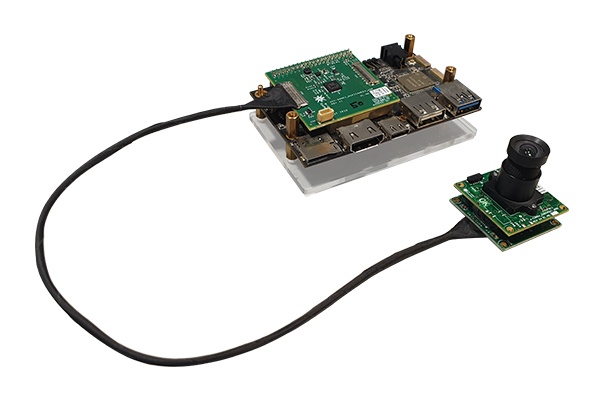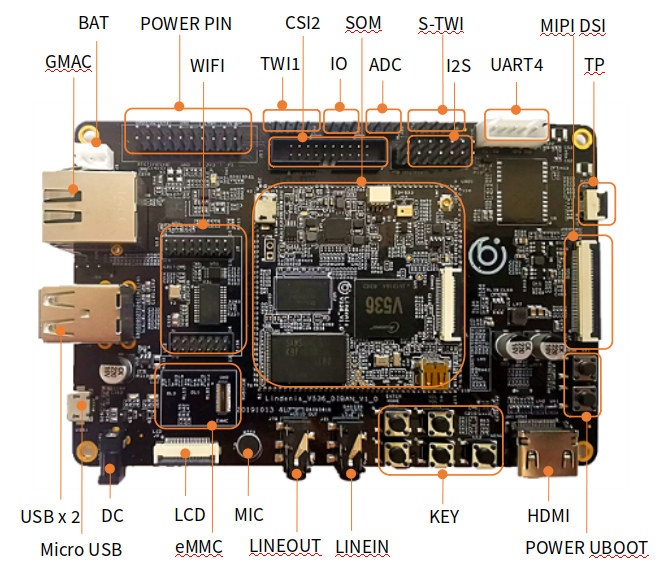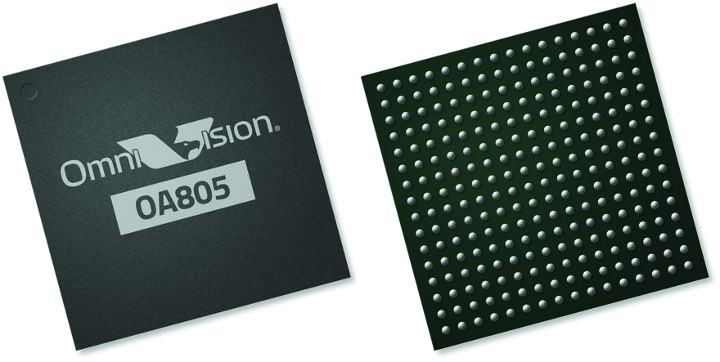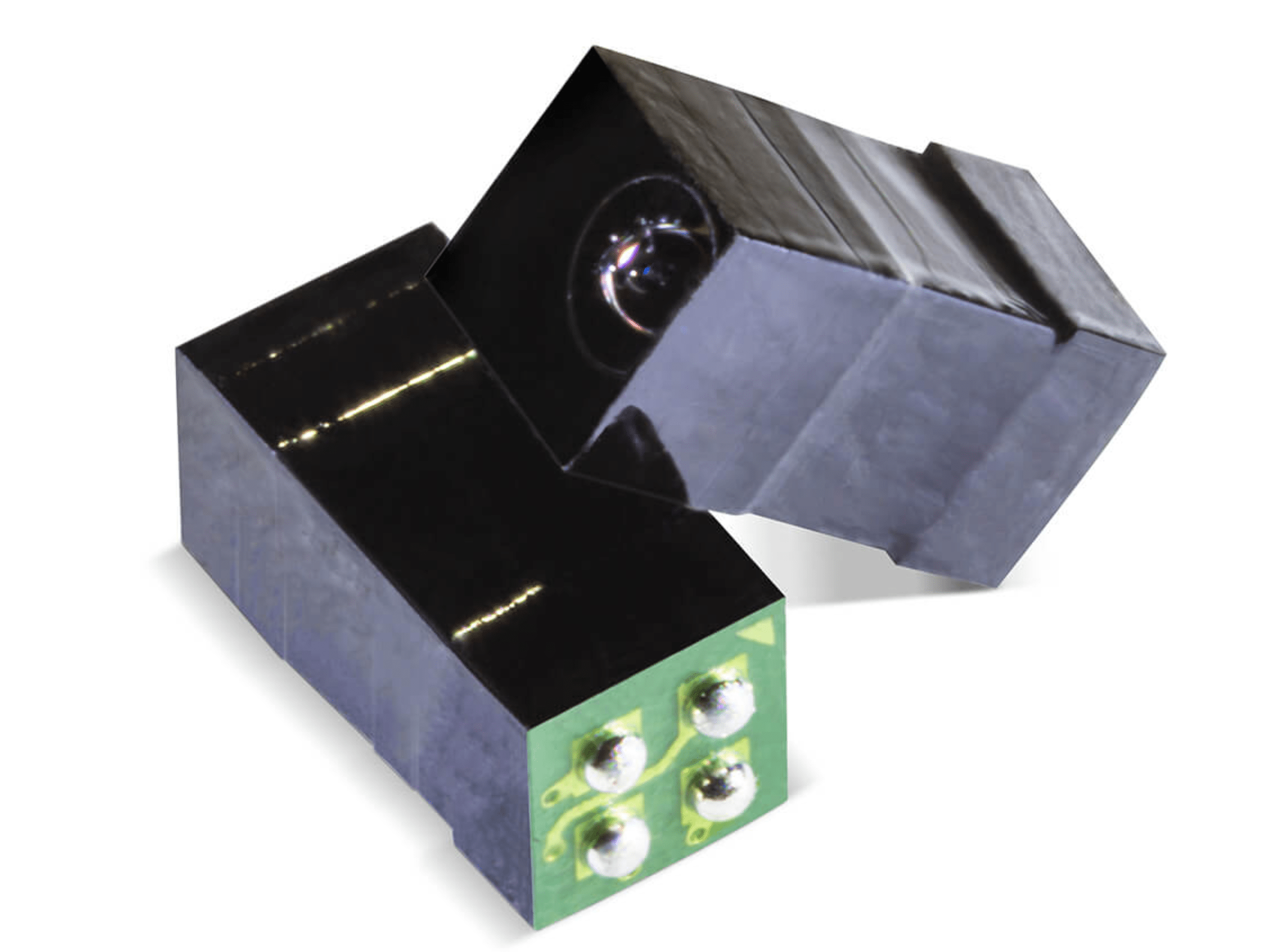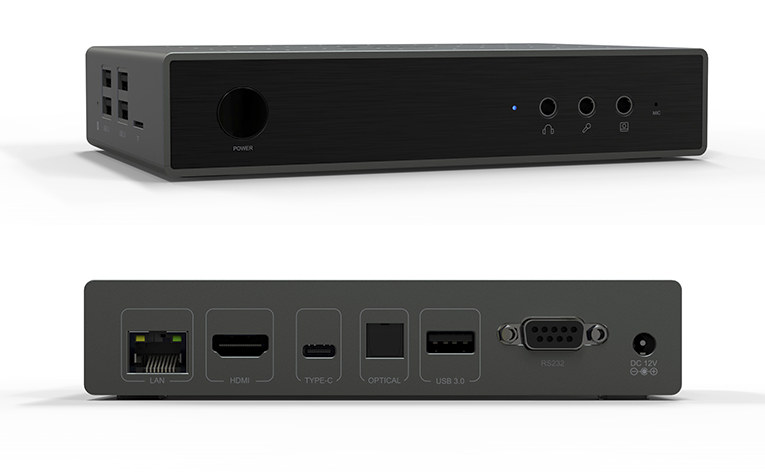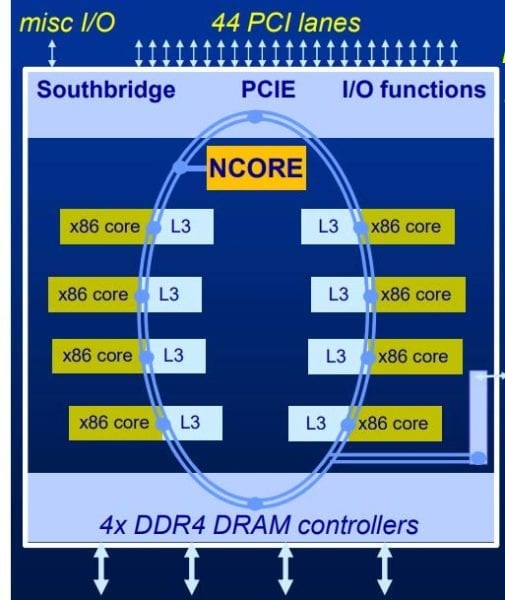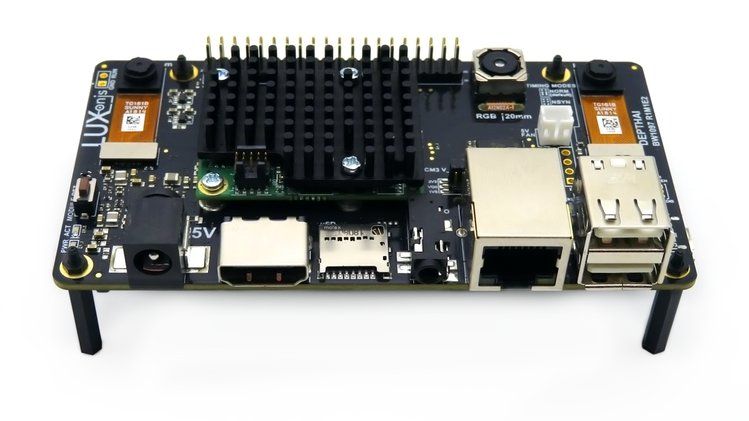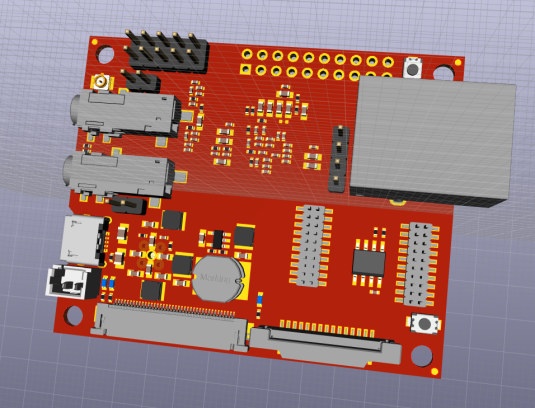VAMRS Rock960 is a 96Boards compliant development board based on Rockchip RK3399 processor that was first unveiled in 2017, but last year it got a low-cost version with Rock960 model C selling for as little as $69. All variants of Rock960 come with MIPI CSI signals exposed via the 60-pin high-speed connector defined in 96boards specifications. So it needs a MIPI adapter board to connect the camera, and a couple of years ago, instructions were posted explaining how to use a MIPI CSI camera on 96boards such as Rock960. It now appears the MIPI adapter board is not for sale on eBay anymore, but that not an issue as e-Con Systems has just launched e-CAM50_CU96 5.0 MP camera designed to work with Rock960 board, and by extension, I assume, other 96boards compliant SBCs that expose a MIPI CSI interface. e-CAM50_CU96 is comprised of three main components: e-CAM55_CUMI0521_MOD camera module with […]
Lindenis V536 SoM & SBC Targets 4K Camera Applications
Back in summer 2018, we wrote about Lindenis V5 single board computer based on Allwinner V5 quad-core Cortex-A7 processor with two MIPI CSI connectors and designed for 4K cameras. Allwinner has now come up with a new 4K camera processor very similar to V5, since Allwinner V566 comes with two Cortex-A7 cores, and a single MIPI CSI interface, and Lindenis designed a new SBC based on the new processor using a SoM + baseboard design instead. Lindenis V536 specifications: SoM SoC – Allwinner V536 dual-core Cortex-A7 processor @ 1.2 GHz; 4K H.265/H.264 video encoding & decoding @ 30 fps; 28nm process System Memory – 1GB DDR3 Storage – SPI NOR flash or SPI NAND flash, bootable MicroSD card Video Output – Micro HDMI 1.4 port Video Input – MIPI CSI connector Audio – Digital microphone Connectivity – 802.11b/g/n/ac Wi-Fi 5 & Bluetooth 4.2 via AP6255 Baseboard Interface – Castellated holes […]
OmniVision OA805 4K Video Camera SoC Supports 100 ms Boot Time, 4K HEVC Encoding
OmniVision OA805 Arm Cortex-A5 4K video camera processor is specifically designed for battery operated security and surveillance cameras, including video doorbells, with the ability to encode 4K30p video streams with HEVC/H.265 video codec at very low power consumption. The processor also has a very short boot-up time of just 100ms, meaning it can go from completely powered off to fully functional upon trigger by a motion detection sensor. That short boot time removes the need for standby or sleep mode further lowering the power consumption and allowing the camera to have up to two years of battery life (albeit no mention of battery capacity was made…). OmniVision OA805 specifications: CPU Main CPU – Arm Cortex-A5 processor with NEON, 32KB I-cache, 32KB D-cache Secondary CPU (SPU) – Arm Cortex-A5 processor with NEON, 32KB I-cache, 32KB D-cache Media Processing Unit (MPU) – 32-bit RISC MCU with 8KB I-cache, 8KB D-cache System Memory […]
NanoVision & NanoBerry Miniature Computer Vision Evaluation Kits Released For Arduino & Raspberry Pi Platforms
AMS (Austria Mikro Systeme) known for their array for micro sensing solutions and most importantly the NanEye, a Miniature CMOS image sensor which is designed for applications where size is a critical factor has also launched a set for evaluation kits called the NanoVision and the NanoBerry for the development of solution based on the AMS NanEyeC miniature image sensor. NanEyeC Camera Sensor The NanEyeC comes in a footprint of just 1mm x 1mm surface mount, and it can produce 100kpixel resolution up to 58 frames/s. It seems the NanEyeC is based on the NanEye series, which typical (NanEye) features a 249×250 resolution with a high sensitive 3um x 3um rolling shutter pixel and capable of a high frame rate of about 43fps to 62fps. The NanEyeC sensor is based on the high-speed LVDS data interface. The sensor is assembled with a unique lens and cover glass, which fits in […]
Zidoo M9 is a Rockchip RK3399 TV Box/Mini PC/SBC with Android 7.1 + SDK
Zidoo has launched several TV boxes running Android over the years, some of which we reviewed such as Zidoo X9 (2015), or Zidoo H6 Pro. They also have experience launched dual-OS systems with Android and OpenWrt running simultaneously for multimedia and router functions respectively through their Zidoo X9S media center. The company has now contacted CNX Software to review their latest model. Zidoo M9 is a higher-end Rockchip RK3399 powered Android 7.1 TV box or mini PC, and Zidoo will also sell it as a single board computer for custom projects in the field of robotics, automotive control, artificial intelligence and more. Zidoo M9 specifications: SoC – Rockchip RK3399 hexa-core processor with 2x Cortex-A72 cores @ 2.0GHz, 4x Cortex-A53 cores. and a Mali-T860MP4 GPU with support for OpenGL ES 1.1/2.0 /3.0, OpenVG1.1, OpenCL, and Directx11 System Memory – Dual-channel 4GB DDR (2GB is optional) Storage – 32GB eMMC5.1 flash (8GB/16GB/64G/128G […]
Centaur Unveils an x86 SoC with Integrated AI Coprocessor
Artificial intelligence is handled at different levels in the ecosystem with ultra-powerful systems in the cloud equipped with dedicated hardware such as FPGA or GPU cards, while on the other side of the spectrum we have Arm or RISC-V based processor with AI accelerator for low power systems like smartphones or battery-powered smart cameras. Centaur Technology aims to provide a solution catering to the middle segment of devices that don’t need ultra-low power consumption, nor the highest possible peak performance, but still require a relatively compact form factor and low costs. Their solution is a still-unnamed octa-core x86 processor featuring Centaur NCORE AI coprocessor. SoC with built-in NPU (Neural-network Processing Unit) is pretty common in the Arm and RISC-V world, but it’s apparently a world’s first in the x86 space since existing solutions are all based on external accelerators. Key features of the Centaur x86 AI processor: x86 microprocessor with […]
DepthAI Brings AI plus Depth to the Raspberry Pi (Crowdfunding)
Edge computing on the Raspberry PI has been a bit of ups and downs, especially with everyone gearing for AI in everything. The Raspberry Pi, on its own, isn’t really capable of any reliable AI applications. Typical object detection on the Raspberry Pi would get you something around 1 – 2 fps depending on the nature of your model and this because all those processing is done on the CPU. To address this poor performance of AI applications on the Raspberry Pi, AI Accelerators came to the rescue. The Intel Neural Compute Stick 2 is one such accelerator capable of somewhere around 8 – 15 fps depending on your application. The NCS2, which is based on the Myriad X VPU technology, offers so much more than the compute stick delivers, and this is something that the team behind DepthAI has exploited to create a powerful AI module for edge computing […]
Olimex OSHW Allwinner S3 IP Camera Board in the Works – Feedback & Suggestions Welcomed
Allwinner S3 Arm Cortex-A7 processor is designed for dual-camera systems and embeds 128MB RAM. It looks to be an evolution of the older Allwinner V3s chip that came with 64MB RAM and is software-compatible with the older camera SoC. We reported about the new processor and an Allwinner S3 development board last year, but Olimex has started working on an open-source hardware IP camera board based on the processor and is asking for feedback from customers and the community at large. Preliminary specifications: SoC – Allwinner S3 Cortex-A7 @ 1.2GHz with 128MB DDR3 RAM at 1333 MHz Storage -MicroSD card slot, configuration EEPROM, optional NAND/eMMC/SPI Flash on socket Camera I/F MIPI camera connector with RPi pinout Parallel CSI camera connector Display – LCD connector for LCD-OLinuXino 4.3″ to 15.6″ displays Audio – Audio in and out via 3.5mm audio jacks Connectivity Fast Ethernet with PoE option WiFi / BT module with […]


